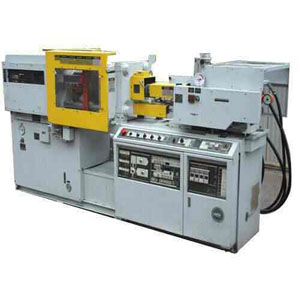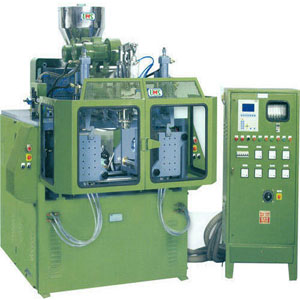Drilling machine is a material-eliminating or cutting process in which the tool uses a drill to cut a hole of roundabout cross-area in strong materials. This is the most widely recognized machining process, one gauge is that 75% of all metal cutting material eliminated comes from the drilling activity.
Drilling Machine Main Parts:
A drilling machine comprises of the following parts:
- Base
- Section or Pillar
- Arm
- Worktable
- Drill head
- Feed Mechanism
- Shaft
- Drill jigs
- chuck
- Electric Motor
- Pully or gears
These are the main pieces of the drill machine. How about we examine one by one.
Base:
It is one of the important parts of a drilling machine, it carries the whole weight of the machine, and move the load to the ground.
The base of a drilling machine is made of solid metal or steel, and it is extremely inflexible. At the top point of the base, there are a few slots to help the huge jobs. And on one side of the base, a spiral column or a pillar is located. The base is darted with the ground or for some situation the base is upheld by two or four legs.
Section or pillar:
The section or pillar is arranged on one side of the base. As a rule, we use a spiral column so the movement of the arm is conceivable in a clockwise or anti-clockwise course. The section is made of solid iron or steel and is likewise unbending so it can convey the heap of the arm just as a drill head. A sliding table is mounted on the section with the goal that the table can have all over movement as indicated by the need.
Upper arm:
At the highest point of the section, there is an upper arm, which conveys the drill head and furthermore the place of the driving tool. The upper arm is likewise made of a similar material as the base. To make the design inflexible. In some penetrating machine, a guideway is given so the drill head can slide over this.
Worktable:
The worktable is made of solid iron and it is mounted on the column. T-slots are given at the top surface of the table. The table can go all over- right or left by the gig and tool course of action. The all over movement of the table can be given by hand just as by some electrical mechanism. We use a rack and pinion mechanism for an upward moment of the table. The state of the table can be rectangular or likewise circular
Drill head:
One side of the arm a drill head is mounted, a drill head comprise of various feed and driving component. A drill toss is mounted over it. A drill head can slide all over according to the need of the job. A V-types belt is given to move the power from the engine to the pulley and from pulley, the mechanical power is moved to the drill head. The various sorts of speed can be produced by the cone pully mechanism as well as a gear-train instrument.
Feed Mechanism:
In a drill machine, we use an electric engine, V-belt, and pulley to move the power from the engine to the axle. For the all over movement of the drill head, we use hand and just as automatic feed by an electrical engine. Here a rack and pinion are used to change over the rotational development from electrical engine or by hand to the straight-line movement.
Shaft:
It is a circular tighten shaft which assists with holding the drill chuck. And It is made of high carbon chromium steel or hardened steel or steel alloys. It moves the rotary movement from drill head to drill. There is a keyhole provided on the shaft to change the drill hurl. The shaft additionally can go all over with the help of rack and pinion tool.
chuck:
The chuck is mounted on the lower end of the axle, it holds the drill jig. Drill chucks are self-focusing. In a drill machine, uses three-jaw chuck. What\’s more it is made of exceptional alloy steel.
Electric Motor:
In a drilling machine, we use a solitary stage ac engine. Which can run at a rpm of 600-5000, or possibly more for high power drilling machine.
Pully or gears:
Pully or gears is used to send power and furthermore for getting high speed. In a drilling machine, we use bevel stuff to communicate power at a point of 90 degrees. So presently we will figure out the way that power moved in a Drilling machine.
How truly does Power Transmission occur in the Drilling machine?
The power transmission in the drilling machine used to communicate power for its working. This power is provided from the electric engine. The course of transmission happens with the help of the v-bolt and the pair of pulley stacks inverse to one another. The speed of the shaft is fixed or controlled with the help of the pulley stacks.
Drilling Machine Types:
- Delicate Drilling Machine
- Vertical or Pillar
- Outspread Arm
- Gang Type
- Multi-Spindle
- Numerical control
- special Purpose Drilling Machine
Delicate Drilling Machine:
This drilling machine has just a hand-feed mechanism for taking care of the tool into the workpiece. This helps the operator to feel how the drill is cutting and how he can handle the down feed pressure.
Vertical or Pillar Drilling Machine:
Vertical or Pillar Drilling Machine is unsupported and is of a far heavier ready to take bigger drills. It has a heavy edge to help a more extensive scope of work. The table stature is movable and power speed and feeds are accessible. The bigger drills have a taper shank situated inside taper bore in the shaft end. These tapers are standardize as Morse tapers.
Outspread Arm Drilling Machine:
The radial drill machine is unattached and the workpiece is clasped in the situation on the base. It is used for heavy and weighty work. The arm is power-driven for the stature area. The drill head is situated using mechanized drives and it cross over the swinging arm. The workpiece remains stationary on the machine base or worktable. The machine shaft is moved to the area required.
Gang Type Drilling Machine:
In the Gang type Drilling Machine, a few axles/or stations are mounted on one long table.
Multi-shaft Drilling Machine:
In the Multi-shaft drilling machine, there are various axles mounted on one head to permit many holes to be drilled all the while.
Numeric Control Drilling Machine:
Numeric control drilling machine can change tooling with a turret or automatic tool transformer. Rates, feeds, and table position is controlled using a PC program.
twist drill classification:
It is planned with cones like inward structure, tight at the highest point of the web with an expanding thickness to the knife. It is a tool with multi-point cutting.
Drilling Machine Operation:
These are the following operations that can be acted in the Drilling machine.
- Plane drilling
- Center drilling
- Step drilling
- boring drilling
- Counter boring drilling
- Reaming
- Subsetting
- Spot facing
- Tapping
- Trepanning
Drilling operation:
At the point when we want a circular opening in a workpiece of any size there, we can use drilling, by drilling you can frame any size of openings in a workpiece. In spite of the fact that you can involve a lathe machine for drilling as well, drill machine is a suitable machine to do holes in a workpiece. The cutting device we use for this sort of activity is drill bit. A drill bit is a multipoint revolving cutting tool which helps to eliminating material from a workpiece.
Center Drilling:
At the point when sand castings are made, centers are used to dislodge the metal where holes are wanted. Profoundly. After the metal sets its is taken out from the mold and the center crumbles leaving the ideal holes. The holes are typically very rough and require heavy body drill to clean up the sidewall of the entirety.
Step Drilling:
Beyond one diameter across can be ground on the drill body which saves an extra operation.
Boring:
At the point when you want to enlarge the diameter of the current hole you need to play out the boring operation, however the precision isn\’t more prominent than reaming activity. The boring tool is a solitary point cutting device.
Reaming:
It is an activity of completing a drilling hole. A completed hole has the predefined diameter size, is totally round, the diameter is a similar size from one end to another, and it has an easily completed surface. A drill hole is only from time to time exact enough in size or smooth to be known as an accuracy hole. At the point when more exactness is required the entire should be drilled by a specific sum and wrapped up by the reaming. So, When we want to enlarge the size of a current hole with incredible precision in a workpiece we need to perform reaming activity. In this kind of activity, we want a reamer to play out the activity. A reamer is a rotational cutting tool that eliminates the material from the current hole.
Counter Boring:
It is the activity of drilling hole, a bigger diameter than the first however concentric with it. At the point when this activity is done on a drilling machine an tool known as counterbore is used. The diameter on the end of the tool known as the pilot keeps the counterbore concentric with the first hole. Pilots are tradable with various sizes to fit the different size of holes.
Counter Sinking:
It is the activity of creating a angular surface toward the end of an hole. A subset is used. The subset is made in numerous diameter size and a few points. The point size relies on the justification behind subsetting. Flathead screws require a subset with a 82 included point, where is a Center hole should be 60. Different types of bolt heads have included points of from 90 to 145 degree.
Spot Facing:
It is the activity of machining a flat, round surface around an whole to give a seat to a Bolt head, nut or washer. It is typically performed on casting. A Counterbore might be used for spot facing. The Surface machined ought to be a square with the hole.
Tapping:
Holes that are to be tapped(threaded) are first drilled to a predefined size. To tap holes on a standard drilling machine, a tapping connection should be used. This connection is held in the shaft of the drill press by a tightened Arbor, who drives the grinding type component. The tap holding hurl precisely fixates the tap on the round piece of the shank and drifting jaws hold the tap on its square end in a firm, inflexible grasp, which keeps the tap from pulling out of the toss while switching.
Trepanning:
It is an hole making activity where an annular groove is created leaving a strong round and hollow center in the middle. In Trepanning a cutter of One or additional front lines set along the periphery of a circle is used to deliver the annular groove. Trepanning is attainable assuming that the hole has a diameter of in excess of 50 mm. The depth of 160 times the diameter can be gotten in Trepanning.
Drilling Machine Advantages:
- This machine is expected to blemish on the finish of parts of dresses particularly for setting pocket, dart and so on.
- It can make the hole for very long.
Drilling Machine Disadvantages:
The use of a machine is restricted.
Drilling Machine use:
It is used to make an hole in the texture for button attaching and to make a reference mark for connecting distinctive little parts on the articles of clothing.
Find Thanks Divine Order



